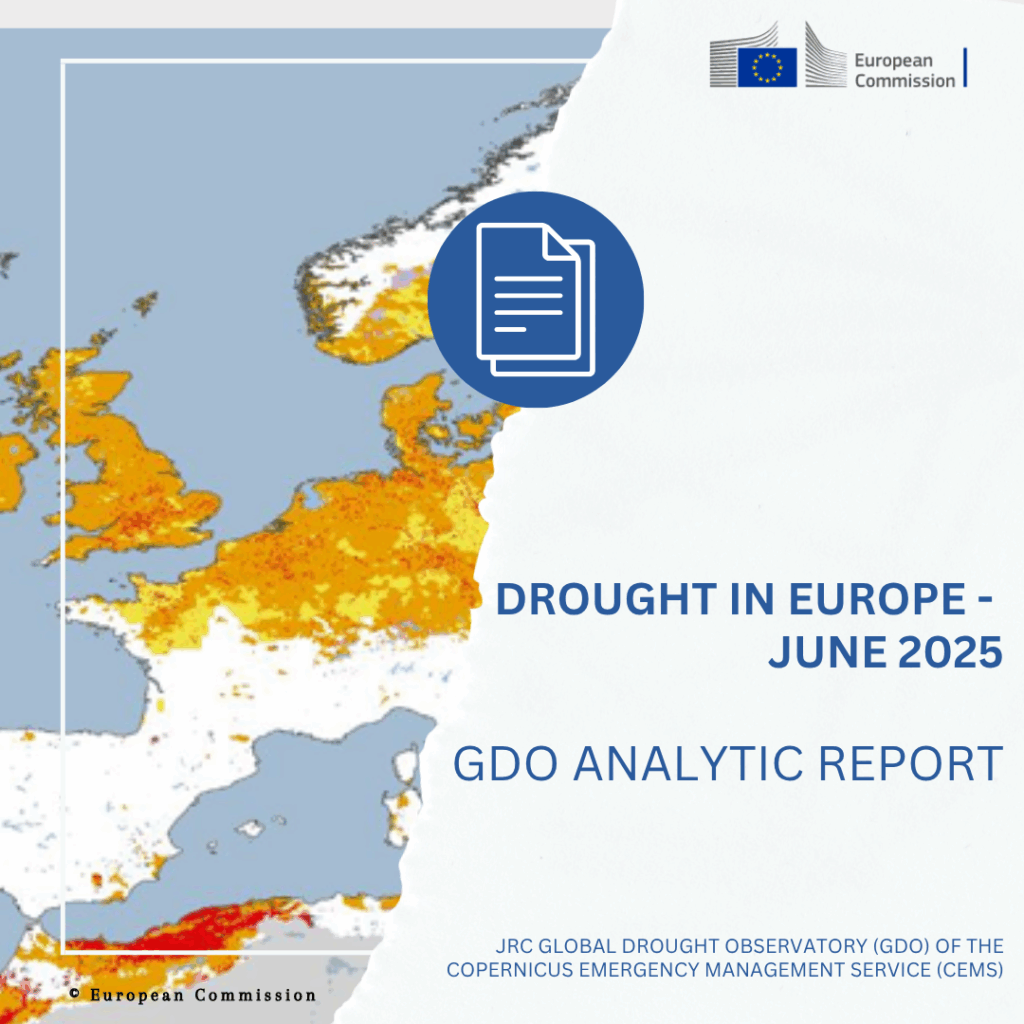The European Commission published an analytical report summarizing the state of the art of the drought in Europe. As of late May 2025, large parts of Europe have experienced significant precipitation anomalies, contributing to ongoing drought conditions. The Standardised Precipitation Index (SPI-3), which measures rainfall over a 3-month period, indicates widespread dryness in several regions, including Germany. This lack of rainfall has been a major driver of soil moisture deficits and drought intensification across central and northern Europe.
In Germany, the prolonged shortage of precipitation has led to drier-than-usual soil conditions, especially in the north and central areas. These deficits are compounded by higher-than-average temperatures, which accelerate soil moisture loss through evapotranspiration. Additionally, some areas in Germany have registered extreme dryness, with soil moisture anomalies falling into the most severe category. This has raised concerns over water availability and the potential impact of vegetation and crops.
Hydrologically, Germany has also seen signs of stress, with localised low-flow conditions in some river systems, although these are more severe further east in Europe. Therefore, despite low precipitation, the Rhine River basin flow is sustained by snowmelt processes, ensuring normal conditions. The dry conditions are projected to persist into the summer months up until September 2025. Seasonal forecasts predict continued below-average precipitation and above-average temperatures for Germany and surrounding regions. This combination heightens the risk of further agricultural and ecological stress, making water resource management and drought monitoring critical for the months ahead.



